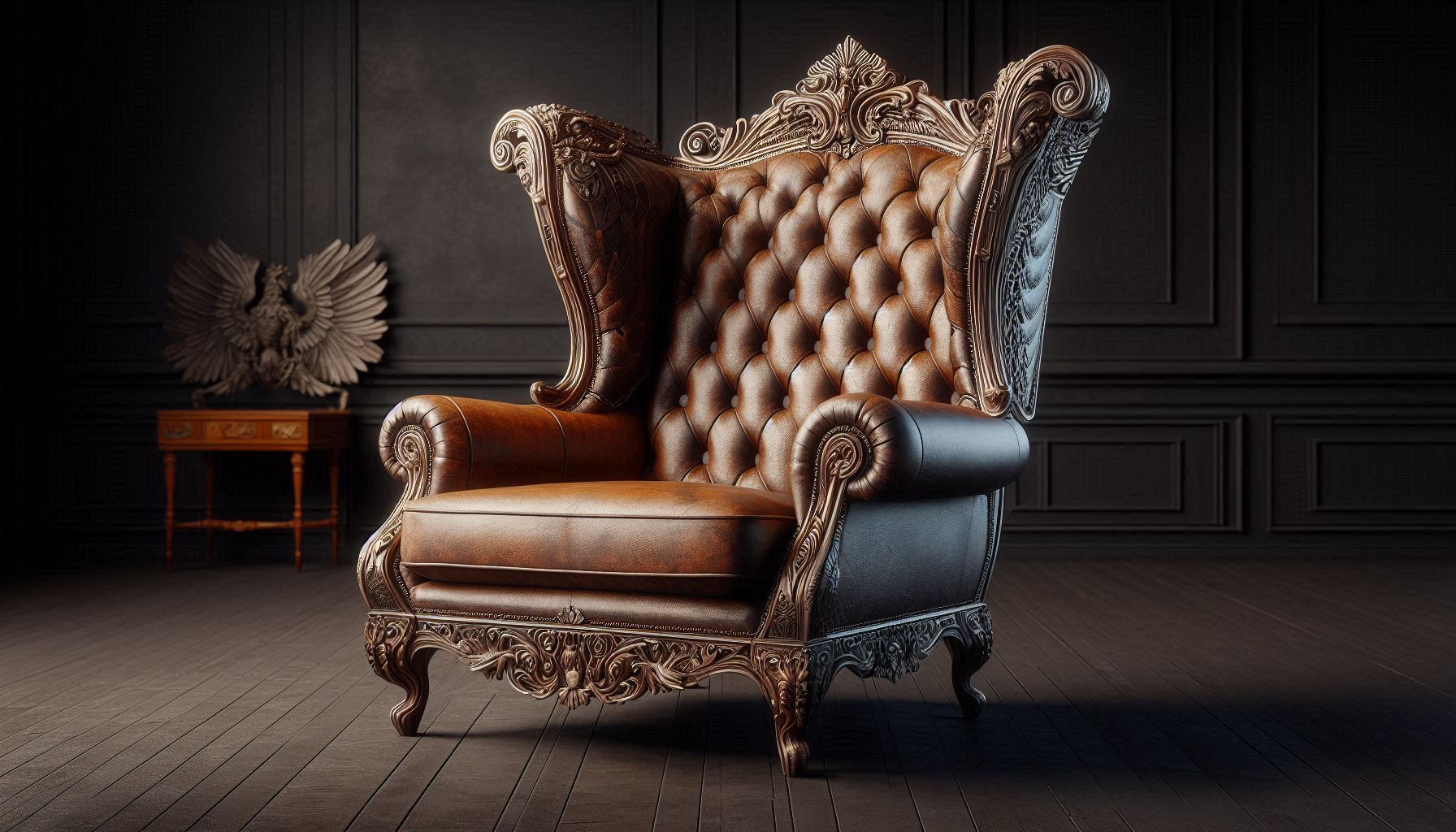
How Do I Reupholster a Wingback Chair?
Are you looking to breathe new life into an old, worn-out wingback chair? Maybe you’ve got a family heirloom that needs a fresh look, or you’ve stumbled upon a hidden gem at a yard sale. Whatever your reason, reupholstering a wingback chair can be a rewarding DIY project that transforms your furniture and your living space. Let’s dive into the nitty-gritty of this craft and turn that tired chair into a showstopper!
Quick Answer
To reupholster a wingback chair, you’ll need to remove the old fabric, replace the batting if necessary, cut new fabric using the old pieces as templates, attach the new fabric starting from the inside back, and add welting for a polished look. The process requires patience, attention to detail, and basic sewing skills.
My Reupholstery Adventure

Before we get into the how-to, let me share a quick story. Last summer, I spotted a sad-looking wingback chair on the curb with a “Free” sign. It was love at first sight – I could see past its faded, stained fabric to the beautiful bones underneath. I lugged it home (much to my partner’s amusement) and decided to give reupholstering a shot.
Now, I’m no expert. My sewing skills were limited to hemming pants and sewing on buttons. But I figured, “How hard could it be?” Turns out, it was quite the challenge! But with some YouTube tutorials, a lot of patience, and maybe a glass of wine or two, I managed to turn that roadside reject into a stunning centerpiece for our living room. If I can do it, so can you!
Getting Started: What You’ll Need
Before you dive in, make sure you have all the necessary materials and tools. Here’s what you’ll need:
Materials:
- Upholstery fabric (about 6-7 yards)
- Batting (1/2 inch thick)
- Polyester welt cord or piping
- Upholstery tack strips
- Cardboard tack strip
- 3/8-inch or 5/16-inch staples
Tools:
- Staple gun
- Needle-nose pliers
- Scissors
- Marking pen
- Flathead screwdriver
- Camera or notepaper and pencil
- Chalk
- Sewing machine
Got everything? Great! Let’s get started on this makeover magic!
Step-by-Step Guide to Reupholstering Your Wingback Chair

1. Strip It Down: Removing the Old Fabric
First things first – we need to get that old, tired fabric off. This step is like peeling an onion; you’ll be uncovering layers of your chair’s history.
- Start by flipping the chair over and removing any dust cover on the bottom.
- Use your flathead screwdriver and pliers to carefully remove staples and tack strips.
- Pro tip: Take lots of photos as you go! These will be your roadmap when it’s time to put everything back together.
- As you remove each piece of fabric, label it with its location on the chair. For example, “outside back,” “seat cushion,” or “left arm.” You’ll thank yourself later!
Remember, patience is key here. Rushing could damage the chair’s frame or padding. Take your time and enjoy the process of discovery.
2. Out With the Old, In With the New: Replacing the Batting
Now that you’ve stripped your chair down to its skivvies, it’s time to assess the batting. If it’s worn, stained, or just plain gross, it’s gotta go.
- Remove the old batting carefully.
- Cut new pieces to fit the chair’s back, seat, and arms.
- Staple the new batting to the frame, making sure it’s smooth and evenly distributed.
Remember: Good batting is the foundation of a comfortable chair. Don’t skimp on this step!
3. Measure Twice, Cut Once: Preparing Your New Fabric
This is where those labeled pieces of old fabric come in handy. They’re going to be your patterns for cutting the new fabric.
- Lay out your new fabric on a large, flat surface.
- Place the old fabric pieces on top and trace around them, adding an extra 2-3 inches all around for stapling.
- Cut out your new fabric pieces, making sure to mark them just like you did with the old ones.
Pay attention to patterns! If your fabric has a pattern, make sure it lines up correctly across all pieces. Nothing ruins a reupholstery job faster than mismatched patterns.
4. Putting It All Back Together: Attaching the New Fabric
Now comes the fun part – seeing your chair come back to life with its new look!
- Start with the inside back of the chair. Position the fabric and start stapling, pulling it tight to avoid wrinkles.
- Move on to the seat, then the arms and sides.
- Use the cardboard tack strip for straight edges and the upholstery tack strips for curves.
Take your time here. Smooth out wrinkles as you go, and don’t be afraid to remove staples and reposition if needed. Perfection takes patience!
5. The Finishing Touches: Adding Welting and Details
Want your chair to look like it was done by a pro? It’s all in the details.
- Attach welting (that’s the fancy term for cording) along the edges for a polished look.
- You can sew the welting into the fabric or use fabric glue for a no-sew option.
- Make sure all your seams are neat and trim any excess fabric to avoid lumps.
Tips for Reupholstery Success
Here are some nuggets of wisdom I picked up during my reupholstery adventure:
- Take your time with pinning and sewing. A rushed job will look… well, rushed.
- Double-check the fit of each piece before stapling it permanently. Trust me, it’s easier to adjust now than later.
- Use the original fabric pieces as templates whenever possible. They’re your best guide for getting the right shape and size.
- Don’t be afraid to take breaks. Reupholstering is a big job, and fresh eyes can spot mistakes you might miss when you’re tired.
Common Pitfalls and How to Avoid Them
Even the pros make mistakes sometimes. Here are some common oopsies and how to sidestep them:
- Misaligned patterns: Always check your pattern placement before cutting and stapling.
- Lumpy cushions: Make sure your batting is smooth and even before attaching the fabric.
- Visible staples: Use a staple gun with adjustable depth to avoid staples poking through the fabric.
- Fabric bunching: Pull the fabric tight as you staple, working from the center outwards.
The Big Reveal: Enjoying Your “New” Chair
Congratulations! You’ve done it! Step back and admire your handiwork. That sad, old chair has been transformed into a stunning piece of furniture, all thanks to your hard work and creativity.
When I finished my curbside rescue chair, I couldn’t stop staring at it. Every time I walked into the living room, I’d do a little happy dance. My partner even admitted it looked “pretty good” (high praise indeed!).
Your reupholstered wingback chair is more than just a place to sit – it’s a testament to your skills, patience, and vision. So go ahead, pour yourself a cup of tea (or that glass of wine), sit back in your beautifully reupholstered chair, and bask in the glow of a job well done!
Wrapping It Up: Your Reupholstery Journey
Reupholstering a wingback chair is no small feat, but the results are so worth it. Not only do you end up with a unique piece of furniture that perfectly matches your style, but you also gain a new skill and a huge sense of accomplishment.
Remember, every reupholstery project is a learning experience. Don’t get discouraged if things don’t turn out perfectly the first time. Each project will get easier as you gain confidence and expertise.
So, are you ready to take on your wingback chair reupholstery project? Grab your tools, pick out some fabulous fabric, and get ready to transform your space. Happy reupholstering!
Next Steps
- Choose your fabric – have fun exploring different colors and patterns!
- Gather your tools and materials
- Set aside a weekend (or two) for your project
- Document your process – before and after photos are a must!
- Show off your gorgeous “new” chair to friends and family
Remember, the journey is just as important as the destination. Enjoy the process, learn from any mistakes, and most importantly, have fun bringing new life to your wingback chair!


Leave a Reply